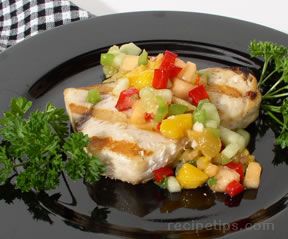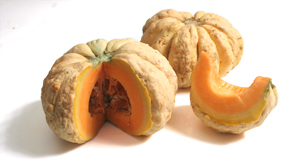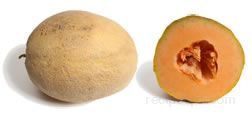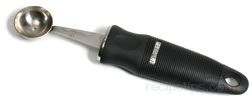Similar Content to: Christmas Melon

Selecting a ripe melon is not always an easy task as melons do not ripen well once they have been picked off the vine. Some tips when selecting are: smell the melon, it should smell fresh and sweet with a fruity odor; shake it, loose seeds are an indication that the melon is ripe but they should not be sloshing loosely; apply pressure on the ends using your fingers or hand, they should be soft or tender not mushy, particularly the end opposite the stem; and, select well rounded shapes that feel heavy for their size.
If storing melons for a few days, be sure to keep them somewhere out of the sunlight, at a temperature not to exceed 70° and then chill before serving. If storing cut melons in the refrigerator, be sure to cover with plastic or foil to keep other foods from taking on the melon odor or flavor. Full melons that are ripe can be stored in the refrigerator for a week or less. To enhance the flavor of melons being served, sprinkle a little lemon or lime juice to the fruit after it has been sliced.











